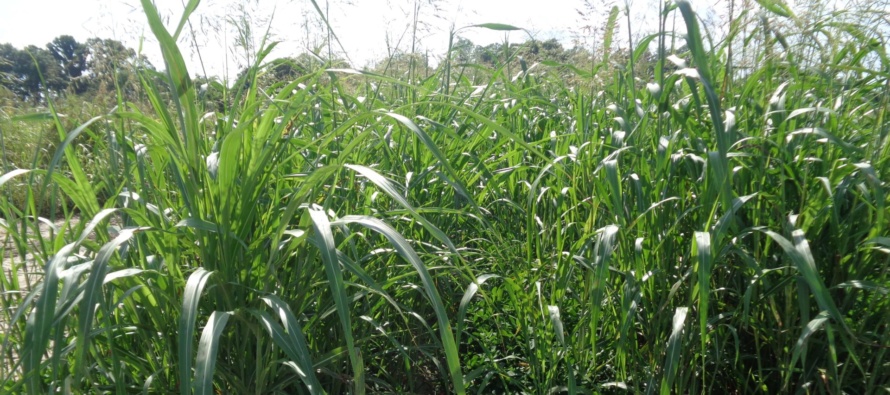Johnsongrass

Related Articles
- Calcium and Magnesium For Mississippi Crops 0
- March 11 Precision Agriculture Workshop 0
- Ground Speed Affects Spray Droplet Deposition 0
Latest Tweets
Johnsongrass
Weed Flora of Mississippi
Prepared by
Taghi Bararpour and Jason Bond
Family: Poaceae
Genus: Sorghum Species: halepense
History: Johnsongrass is native to areas from southern Europe through India. Introduced to South Carolina from Turkey in the early 1800s as a forage crop. It was named after Colonel William Johnson, who introduced this species to his fertile river bottom farm in Alabama around 1840.
Life Cycle: Perennial grass with dense rhizomes
Special Characteristics: This species is considered one of the 10 worst invasive weeds in the world. Fifty-three countries, ranging in latitude from 55 N to 45 S report johnsongrass as invasive. Johnsongrass is a C4, perennial, rhizomatous grass weed which reproduces by seeds and rhizomes. Rhizomes are extensive and produced in the top 10 inches of soil but have been found at depths of 5 feet. A single plant may produce more than 80,000 seeds in a single growing season, and 275 feet of rhizomes.
Roots: Deep, fibrous root system; rhizomes are white and fleshy with brown to purple nodes; roots and new plants often form at nodes.
Stems: Up to 8 ft tall; many tillers arise from crown; stems slightly flattened with prominent nodes.
Leaves: Leaf blades are hairless with smooth edges and have a midvein that is whitish at the base.
Flower: Flowers occur in a loose, spreading, purplish panicle. The flower head is large, open, well branched and has an overall pyramid outline. Initially it is green or greenish violet. At maturity it becomes a dark reddish or purplish brown.
Seeds / Fruit: Seed is narrow, less than 0.25 in. long and reddish-brown to black. Fruits are also produced in a panicle. Seeds form in the sessile spikelets. Seeds can survive for up to five years.
Seedling: It resembles a young corn seedling, a johnsongrass seedling can be distinguished by its football- to egg-shaped, dark reddish-brown to black seed, which remains attached after carefully removing the seedling from soil.
Interference: Crop yield losses varied between 12 to 95% in corn, 18 to 94% in soybean, and 19 to 99% in sunflower for low and high johnsongrass infestations.





Let me tell You a sad story ! There are no comments yet, but You can be first one to comment this article.
Write a comment